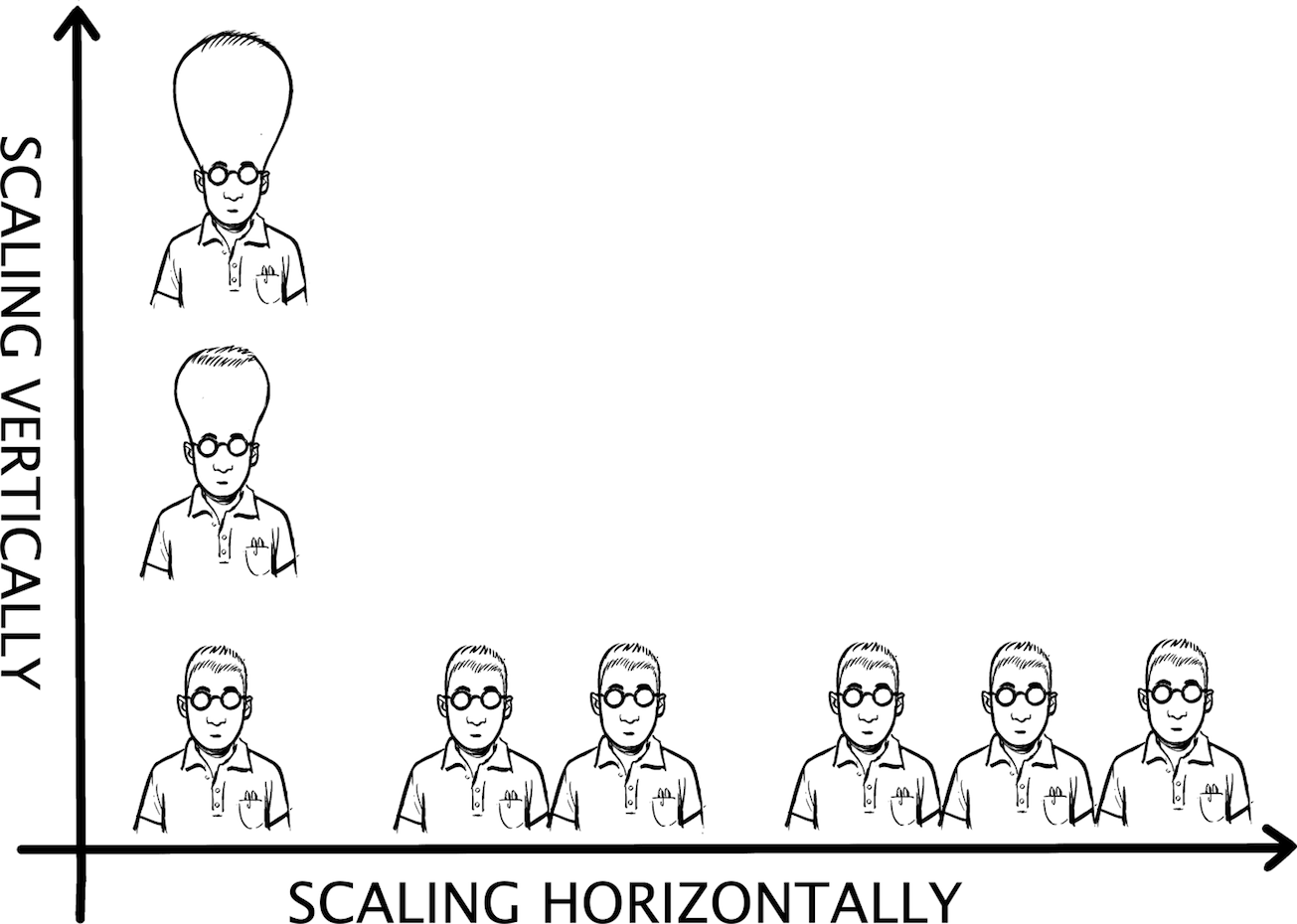Chapter 30. Scaling an Organization
How to Scale an Organization? The Same Way You Scale a System!

Horizontal scaling seems more natural
The digital world is all about scalability: millions of websites, billions of hits per month, petabytes of data, more tweets, more images uploaded. To make this work, architects have learned a ton about scaling systems: make services stateless and horizontally scalable, minimize synchronization points to maximize throughput, keep transaction scope local, avoid synchronous remote communication, use clever caching strategies, and shorten your variable names (just kidding!).
With everything around us scaling to never-before-seen throughput, the limiting element in all of this is bound to be us, the human users, and the organizations we work in. You might wonder, then, whether IT architects, who know so much about scalability, can apply their expertise to scaling and optimizing throughput in organizations. I might have become an architect astronaut1 suffering from oxygen deprivation due to exceedingly high levels of abstraction, but I can’t help but feel that many of the scalability and performance approaches known to experienced IT architects can just as well be applied to scaling organizations. If a coffee shop (Chapter 17) can teach us about maximizing a system’s throughput, maybe our knowledge of IT systems design can help improve an organization’s ...
Get The Software Architect Elevator now with the O’Reilly learning platform.
O’Reilly members experience books, live events, courses curated by job role, and more from O’Reilly and nearly 200 top publishers.

